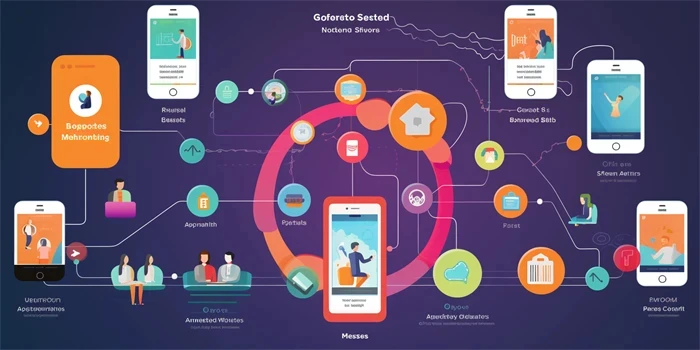Are you tired of feeling lonely and looking for a friend who is always there for you? Look no further! With today’s advancements in Artificial Intelligence (AI), you can now design your own AI best friend in the form of a chatbot app. This article will guide you through the process of building your very own AI chatbot app from scratch. Let’s get started!

1. Define the Purpose
The first step in building your AI chatbot app is to define its purpose. Ask yourself, what do you want your AI best friend to do for you? Do you want it to provide emotional support, engage in meaningful conversations, or assist with everyday tasks? Clearly defining the purpose will help you shape the functionality and personality of your chatbot.
For example, if you want your AI best friend to provide emotional support, you can design it to actively listen and respond empathetically to your concerns and validate your emotions. On the other hand, if you want your chatbot to assist with everyday tasks, you can focus on integrating it with various apps and services to provide practical help.
2. Choose an AI Framework
Once you have defined the purpose of your AI chatbot, it’s time to choose an AI framework to build it. There are several popular frameworks available, such as Dialogflow, IBM Watson Assistant, and Microsoft Bot Framework. These frameworks provide pre-built models and tools to train and deploy your chatbot.
Each framework has its own strengths and weaknesses, so it’s essential to consider factors like ease of use, natural language processing capabilities, and integration options with other platforms. Do thorough research and select the framework that aligns best with your requirements.
3. Design Conversational Flows
The key to a successful AI chatbot app is designing intuitive and engaging conversational flows. Think about how you want your chatbot to interact with users and create a series of dialogues that feel natural and human-like. Consider different scenarios and plan out the chatbot’s responses accordingly.
Break down your conversations into smaller steps, and use decision trees or flowcharts to visualize the different paths users can take. This will help you identify any potential bottlenecks or confusion points and optimize the user experience.
4. Implement Natural Language Processing
To make your AI chatbot app truly interactive, you need to implement natural language processing (NLP) capabilities. NLP enables the chatbot to understand and interpret user inputs, allowing for more dynamic and personalized conversations.
Use NLP libraries or APIs provided by your chosen AI framework to extract relevant information from user queries. By accurately understanding the user’s intent, your chatbot can provide more accurate responses and create a better user experience.
5. Add Personality and Emotions
Creating an AI best friend means infusing your chatbot with a unique personality. Determine how you want your chatbot to sound and behave. Do you want it to be formal or casual, serious or funny? Establishing a consistent personality will make interactions with your chatbot more enjoyable and relatable.
Furthermore, consider adding emotions to your chatbot. Emotion recognition algorithms can enable your AI friend to detect the user’s emotions through text or voice inputs. By incorporating emotional responses, your chatbot can provide empathetic support and build a deeper connection with users.
6. Test and Iterate
After the initial development of your AI chatbot app, it’s crucial to test its functionality and gather user feedback. Conduct user testing sessions to observe how people interact with your chatbot and identify any areas for improvement.
Iterate on your design and make adjustments based on user feedback. This continuous improvement process will ensure that your AI chatbot app becomes more effective over time, enhancing its ability to be the best friend you’ve always wanted.
7. Deploy and Monitor
Once you are satisfied with the performance of your AI chatbot app, it’s time to deploy it. Choose a platform or hosting service that aligns with your requirements and deploy your chatbot to make it accessible to users.
As your app gains users, it’s essential to monitor its usage and performance. Collect data on user interactions and analyze it to identify areas for further enhancement. Continuously updating and refining your chatbot based on user feedback and usage patterns will ensure its continued usefulness and relevance.
FAQs
Q: Can I integrate my AI chatbot app with other apps or services?
A: Yes, most AI frameworks provide integration options with popular apps and services. You can connect your chatbot with platforms like Facebook Messenger, Slack, or even build custom integrations using APIs.
Q: How long does it take to build an AI chatbot app?
A: The development time can vary depending on the complexity and scope of your chatbot app. Simple chatbots can be built in a few weeks, while more advanced ones might take several months.
Q: Are there any privacy concerns with AI chatbot apps?
A: Privacy is an important consideration when building AI chatbot apps. Ensure that you handle user data responsibly and comply with privacy regulations. Be transparent about the data you collect and how it is used.
References
[1] Dialogflow – https://cloud.google.com/dialogflow
[2] IBM Watson Assistant – https://www.ibm.com/cloud/watson-assistant
[3] Microsoft Bot Framework – https://dev.botframework.com/


